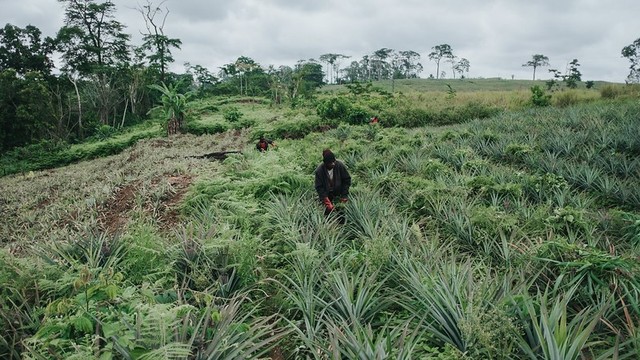Mainstreaming nature and biodiversity into wider planning and policy
Biodiversity conservation, climate change and economic development must be tackled together by the institutions that drive policy, rules, plans, investment and action – a process known as ‘mainstreaming’. We aim to ensure this happens through research, capacity building and partnerships with key organisations, communities and other actors.

Oryx in Namibia. We are helping the country to become a leader in biodiversity mainstreaming (Photo: csaam)
As with many other environmental assets, like clean water, biodiversity is unpriced and its benefits (as well as the costs of its loss) are unrecognised and poorly reflected in public and private sector planning processes. It isn’t prioritised in national or sectoral development and poverty reduction strategies, despite its importance to poor people.
Yet nature-based solutions can help poor people adapt to, and mitigate the effects of, climate change. For example, preserving trees and maintaining biodiversity can help provide natural protection against flooding, while diverse traditional crops often prove to be more resilient to climate and weather variation.
Nature-based solutions can also provide pathways out of poverty – for example through sustainable tourism, wildlife trade and other natural resource based enterprises.
Tackling the trade-offs
There can be trade-offs between meeting conservation, climate and development goals – particularly if they are considered in isolation. The irreparable loss of biodiversity can increase the vulnerability of poor people to climate change and other external shocks and reduce their options for development.
But ill-planned conservation measures can equally exacerbate poverty – for example, if poor peoples’ access to essential natural resources is curtailed by setting up protected areas, which they are then excluded from. Or hitting development targets such as food security can mean sacrificing conservation targets such as maintaining forests.
To tackle these trade-offs, biodiversity concerns must be taken into wider climate and development planning, policy and projects. Equally, poverty and livelihoods issues must be integrated into conservation policy and planning – this is the focus of our work on conservation, communities and equity.
To better integrate biodiversity values into climate and development action we are:
- Building on IIED’s broader experience of environmental mainstreaming to integrate both biodiversity and development considerations into national government policy processes. Partnering with UN Environment’s World Conservation Monitoring Centre, we have been supporting the emergence of an African Leadership Group on Biodiversity Mainstreaming which has, to date, involved working with ministries of environment, finance and planning in Botswana, Namibia, the Seychelles, Zimbabwe, Malawi, Zambia, Ghana and Uganda.
And through the Global Environment Facility-funded CONNECT project, we are working with ministries in Ghana, Mozambique and Uganda to improve the use of biodiversity information in development decision-making.
- Helping communicate the value of biodiversity to “mainstream” decision-makers. We have collaborated with the World Bank on the Wealth Accounting and Valuing of Ecosystem Services (WAVES) initiative to communicate the value of natural resources and ecosystem services through natural capital accounting.
With UNEP-WCMC we are working with the Uganda National Environmental Management Authority and National Planning Authority to build capacity to develop and apply natural capital accounts.
We have also assisted the government of Bhutan to develop a roadmap towards developing forest natural accounts, within their existing environmental accounts structure.
And a toolkit has been developed to reveal the hidden values of small-scale fisheries, and how to include them in national statistics as a step towards mainstreaming a more inclusive fishery sector into national planning. - Assessing the evidence for the effectiveness of ecosystem-based adaptation (EbA) and building the evidence base to keep track of how countries are recognising the importance of nature-based approaches in the commitments they are making under the Paris Agreement.
- Exploring existing and future competition and trade-offs between food production and natural forests, and the implications for conservation and use policies in sub-Saharan Africa.
- Ensuring that the standard “No Net Loss” of biodiversity also means no net loss for people too. We are working with Oxford University and through a Science for Nature and People Partnership (SNAPP) working group to explore the social impacts of biodiversity offsets and develop guidance to mitigate these.
Additional resources
Biodiversity mainstreaming in Global Environment Facility projects: A review of current practice, Jessica Smith, Steve Bass, Dilys Roe (2020), project report
Biodiversity mainstreaming: a review of current theory and practice, Jessica Smith, Steve Bass, Dilys Roe (2020), Project report
Contact
Dilys Rose (dilys.roe@iied.org), principal researcher, IIED's Natural Resources research group


